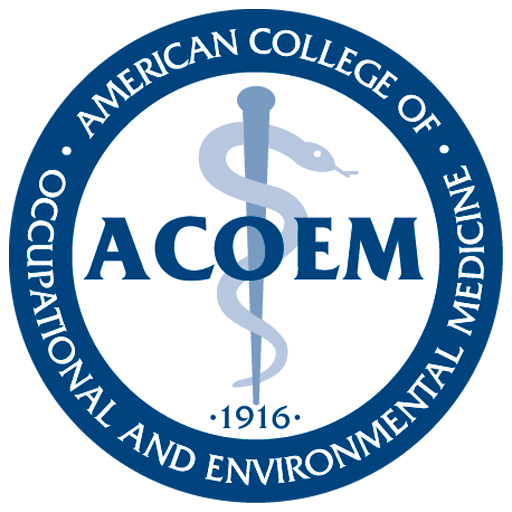
02: Care of the Ill or Injured Worker
Many workers are at risk of developing occupational infections, including those employed in the health care, agricultural, construction/demolition, and sanitation sectors. The most common primary infections that present to the primary care health care provider in the scope of a work exposure or illness are superficial wound infections (such as cellulitis), followed by respiratory infections. Secondary infections can occur, depending on the mechanism of injury or illness and complications, because of underlying comorbid conditions in the injured worker. Examples include the systemic dissemination of an infectious agent(s) after an injured worker sustains a complex injury to bone or soft tissue or pulmonary compromise (such as pneumonia) after an inhalation exposure. Understanding the work-related exposures that contribute to these infections requires special attention because they pose unique challenges to patient care and safety in the workplace.
Types of Infectious Agents
Bacterial, viral, fungal, protozoan, and parasitic agents are the most common sources of occupationally derived infectious diseases. Prions (proteinaceous infectious particles that do not have genes and are able to replicate in humans) can also cause infections in the work setting, albeit rarely.
Health care workers are susceptible to a number of infectious agents, primarily bacterial and viral (see Table 1).
Table1: Infectious Agents that Can Be Acquired by Health Care Workers
| Bacterial | Viral |
| Acinetobacter baumannii | Hepatitis A |
| Burkholderia cepacia | Hepatitis B |
| Clostridium difficile | Hepatitis C |
| Clostridium sordellii | Human immunodeficiency virus (HIV) |
| Pseudomonas aeruginosa | Norovirus |
| Escherichia coli | Influenza |
| Mycobacterium tuberculosis | |
| Mycobacterium abscessus | |
| Carbapenem-resistant Enterobacteriaceae | |
| Methicillin-resistant Staphylococcus aureus | |
| Vancomycin-resistant Staphylococcus aureus | |
| Vancomycin-resistant enterococcus |
Among bacterial agents, Mycobacterium tuberculosis (which causes tuberculosis) is a widely recognized occupational infectious hazard among health care workers. Those health care workers employed in low- and middle-income countries with a higher prevalence of the disease, and those who treat vulnerable patient populations (including those with immunocompromised states) in the United States are at higher risk of acquiring the bacterium while on the job. With respect to viral agents, health care workers are prone to exposure to HIV and hepatitis C, depending on the type of work they do. Physicians, physician assistants, nurses, phlebotomists, and those doing invasive procedures with increased exposure to infected patients’ bodily fluids (via droplet or percutaneous routes) are more susceptible.
Agricultural workers, particularly those who work directly with animals, are more prone to zoonotic diseases, transmitted to humans from wild or domestic animals and bird species, and to arboviruses, transmitted to humans from arthropods such as ticks and mosquitos through an animal host. Table 2 lists examples of prevalent bacterial and viral agents that can cause zoonotic diseases.
Table 2: Infectious Agents that Can Be Acquired By Agricultural Workers
| Bacterial | Viral |
| Bacillus anthracis | Avian influenza |
| Mycobacterium bovis | Rabies |
| Brucella melitensis | Arboviruses (West Nile, Zika) |
| Brucella abortus | |
| Cryptosporidium parvum | |
| Giardia duodenalis | |
| Leptospira interrogans | |
| Chlamydia abortus | |
| Chlamydia pecorum | |
| Chlamydia psittaci | |
| Coxiella burnetii |
In the construction and demolition industries, the main causes of occupational-related infections are bacterial (Clostridium tetani) and fungal (Aspergillus, Histoplasma, and Coccidioides species).
Sanitation workers, including sewage and wastewater workers, are vulnerable to bacterial (including Helicobacter pylori and Leptospira species) and viral (primarily hepatitis A) infectious agents.
Mechanisms of exposure
Front-line health care workers, such as physicians, nurses, nursing care assistants, technicians, clinical laboratory workers, first responders, and autopsy personnel, can be exposed to infectious agents through contact, droplet, and airborne routes. Contact exposures can happen directly—when the worker touches a patient’s body fluid through non-intact skin or suffers an accidental needle stick—or indirectly, when the worker touches a contaminated item or surface.
Examples of contact-transmissible infectious agents in the health care setting include Methicillin- resistant Staphylococcus aureus and Vancomycin-resistant enterococcus. A health care worker can be exposed to droplet-containing infectious agents when an infected person coughs, sneezes, or speaks or during medical procedures (including suctioning or endotracheal intubation). Disease can develop when these droplets reach the worker’s eyes, nose, or mouth. Influenza and Bordetella pertussis are two examples of droplet-induced infections that can arise among this cohort of workers. Airborne transmission occurs through very small particles that stay intact and disseminate (as opposed to droplets, which are too large to travel long distances). Mycobacterium tuberculosis is one disease that occurs in health care personnel regardless of face-to-face contact with an infected patient. It is spread via droplet nuclei (1 to 5 microns in diameter) when people with pulmonary or laryngeal tuberculosis cough, sneeze, shout, or sing. Depending on the environment, these tiny particles can remain suspended in the air for up to several hours.
Farmers, ranchers, veterinarians, meatpackers, animal breeders, animal researchers, and others in the agricultural field can be exposed through direct contact with animals or birds (through bioaerosols or percutaneously), through their byproducts (such as manure or placenta), through an animal or bird bite, or through inadvertent oral consumption of raw meat or milk. They can also become indirectly infected by contact with contaminated soil, food, or water.
For construction and demolition workers, activities such as digging, drilling, and excavating can stir up the naturally occurring bacterial and fungal inhabitants of soil, water, and vegetation. In the case of tetanus, the bacterium Clostridium tetani enters the body through a wound or cut in the worker’s skin. Fungal spores are resistant to desiccation and thus can survive for years. When they become airborne, these spores can remain suspended in the air for long periods, traveling far from their origins.
Sanitation workers face three main modes of occupational exposure:
- hand-to-mouth contact, which can occur during eating or drinking, or wiping the face with contaminated hands or gloves
- skin contact, through cuts, scratches, or percutaneous sticks
- oral intake of dust/aerosols
Treatment
Appropriate treatment depends on the nature of the organism and manifestation of disease. It can include antibiotic, antiviral, antifungal, or other treatment modality, via oral or intravenous routes. There are many infectious disease guides for the primary care health care provider, including Sanford Guide to Antimicrobial Therapy, Epocrates, UptoDate, and PubMed. In more complicated cases, consultation with an infectious disease specialist is advised.
Return to Work Considerations
It is important for the primary care health care provider to pay careful attention to the patient’s return to work to avoid the potential for complications, including secondary infection. In the case of an injured worker with a burn injury for instance, the primary care health care provider should not send the worker back to work if there is a high probability that the dressing can become compromised through moisture or dirt. However, there are multiple socioeconomic reasons for workers to stay engaged with their workplaces, including full-wage compensation as opposed to limited worker’s compensation. Therefore, the treating provider is encouraged to provide employers with specific work restrictions, such as “must keep dressing dry,” or “no use of left hand” (in the event of a hand infection) and so on. Many states’ workers’ compensation treatment guidelines require medical providers to specify job restrictions and avoid blanket “no work” orders, because many employers offer limited duties or temporary job transfers. After an inhalation exposure has been treated successfully, it is best not to return the worker back to the same work environment if there is a high risk for inhalation of vector particles, because that could lead to secondary infection down the line, such as pneumonia.
Prevention
The Centers for Disease Control and Prevention issues protocols for workers and primary care health care providers in case of blood-borne pathogen exposures (hepatitis B and C, and HIV). These protocols address the use of proper personal protective equipment and how to report needle stick and other bodily fluid exposures.
